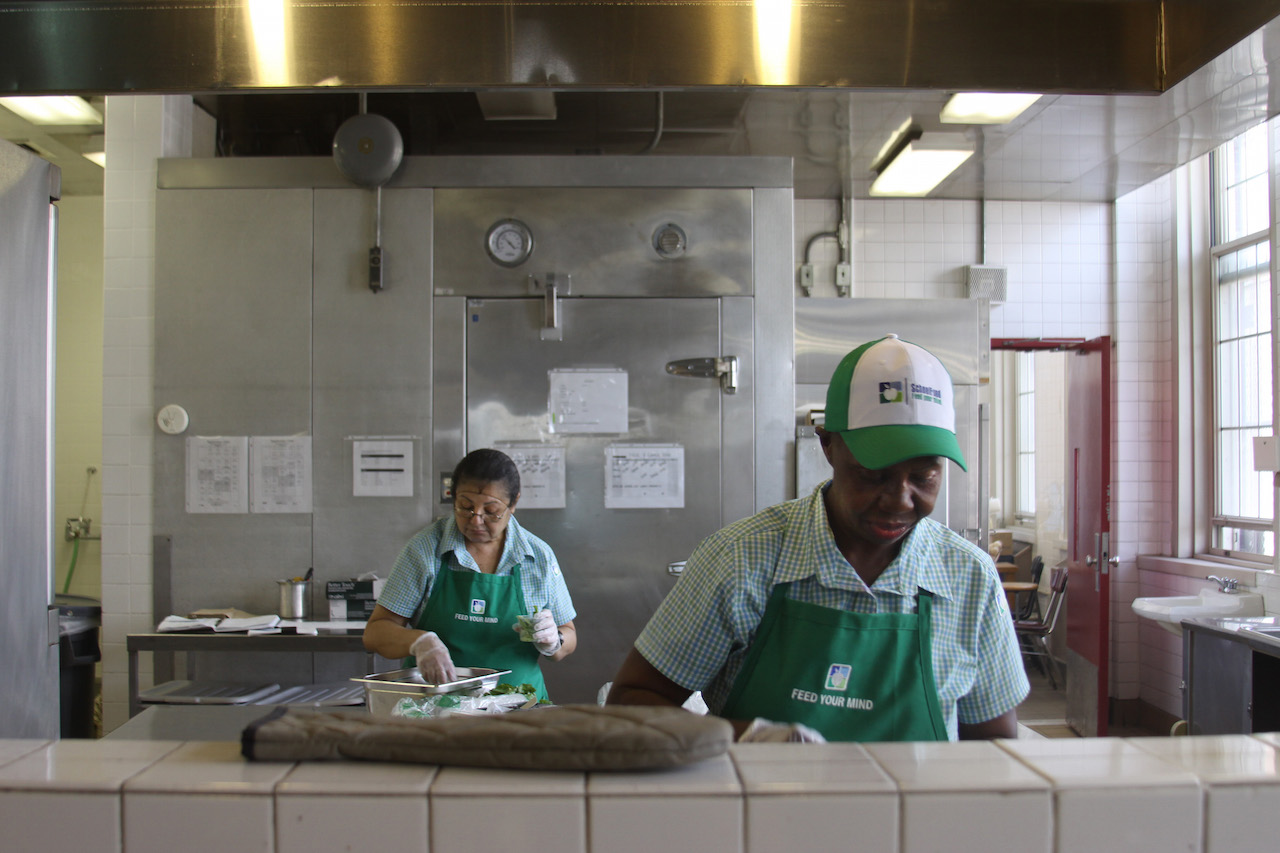
Administrative responsibilities overwhelm food workers, they say
Milagros Rodriguez has been working in school kitchens for 23 years. As she stuffed fresh lettuce into stacks of plastic cups on a recent school day, she explained that the real stressor in the kitchen is all the documentation she has to fill out.
“There simply isn’t enough time to prepare meals, check the different recipe books and deal with the paperwork,” she said.
Rodriguez works at Mott Haven Community High School, a school of 251 students, at 455 Southern Boulevard. Add to that H.E.R.O High’s 231 students and New Visions Charter School’s more than 300 students that share the same building and Rodriguez and her team are feeding close to 800 kids a day under one roof within three different systems.
“Having three separate systems is stressful, but we make it work,” she said.
Henry Garrido, executive director of District Council 37, New York City’s largest public employee union, was at the school checking on cafeteria workers. He agreed with Rodriguez.
“The problem is not making the food and feeding kids,” Garrido said, “it’s about what happens in between.” Three schools with three different meal systems served by one cafeteria require a host of administrative duties. Each school requires different arrangements. According to Garrido a single system for all three schools would streamline operations making work easier no matter the number of students being fed.
Shaun D. Francois I, president of the public education employees union, Local 372, accompanied Garrido during his school visit. He called the problem “piggybacking.” Programs and collocating are implemented without factoring in additional labor.
“More work should require more people” Francois said, adding that school kitchens aren’t the only understaffed student service. Piggybacking happens across the board.
Jason Fink, Deputy Press Secretary for the New York City Department of Education, refuted Francois’ complaints and explained that the education department adheres to the terms of union contracts.
“We appreciate the professional and dedicated staff in our cafeterias and throughout our schools,” he said.
According to Garrido, the current lunch systems aren’t just burdening workers, they are affecting students too. Every year 250,000 students go without lunch in New York City. While eligible for a free school meal, a significant number of students don’t participate because of the poverty stigma associated.
Mott Haven Community High School and H.E.R.O High School have a universal lunch program for all students, but New Visions Charter School has a program based on accountability where kids are classified by income. To avoid disclosing which students have less means schools assign numbers based on family income, but Garrido explained that most kids usually figure it out.
Garrido believes the Department of Education should extend the universal school lunch program beyond middle schools to include high schools. He said that all public school students should eat lunch for free whether they are in first grade or in high school.
“It should be a fundamental right,” he explained, “just like education.”
Garrido and Francois agree that extending the universal lunch program to all high schools would not only ensure every student gets lunch but will provide a single system for all cafeteria staff to follow. The three lunch processes would be cut down to one, alleviating administrative responsibilities.
Rodriguez was still stuffing lettuce into cups when Garrido and Francois wrapped up their chats with kitchen staff. A lunch worker started to shoo visitors out of the kitchen. Even though many students were on a field trip, there was still plenty to be done.
“She doesn’t have enough help,” Francois said. “She is stressed out.”

